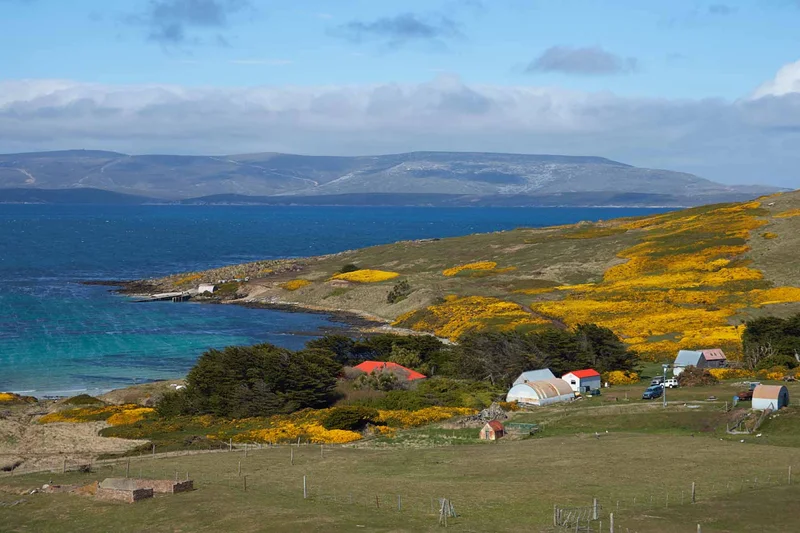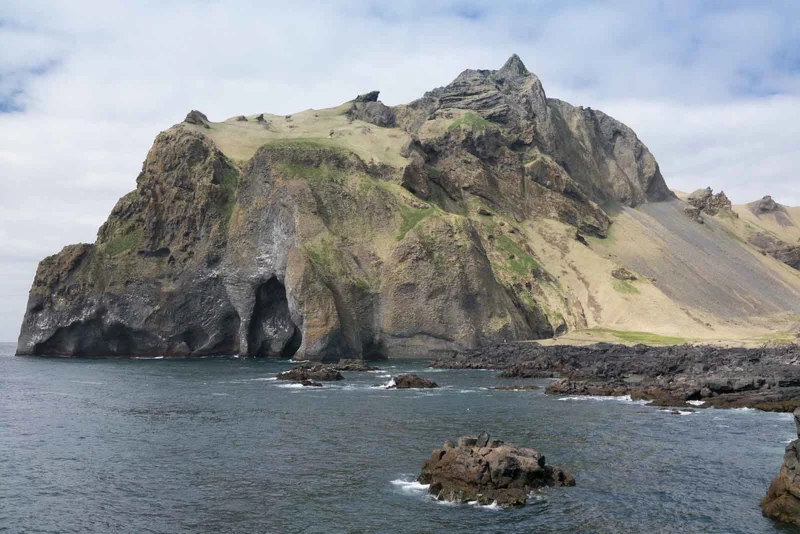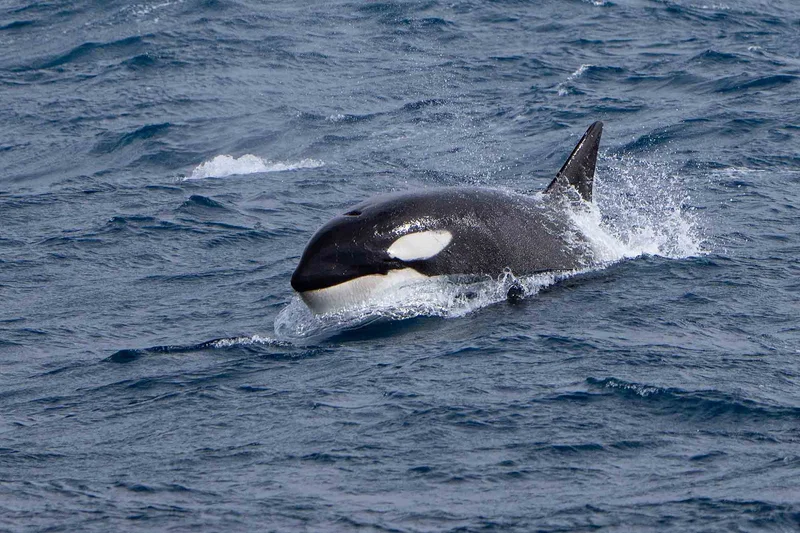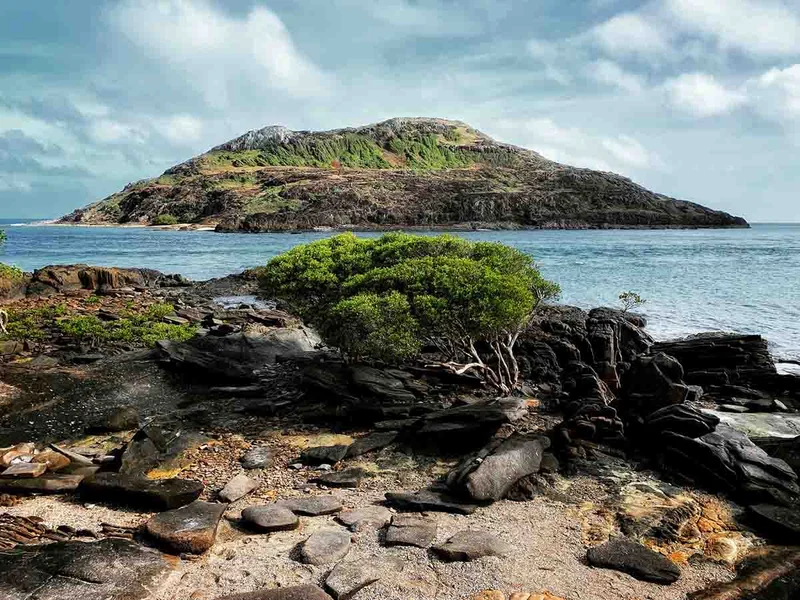
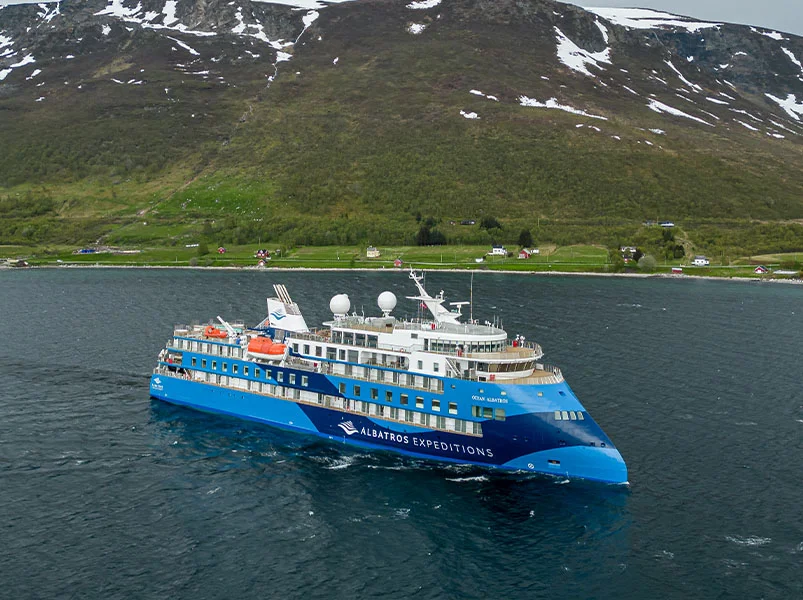
This expedition cruise follows the same maritime course set by Norse settlers over a thousand years ago. The cruise will visit several iconic Greenlandic locations, including Skjoldungen island, Prince Christians Sound, Nuuk, Disko Bay, Eqi Glacier, Sermermiut Plain, and Kangerlussuaq. This is a once-in-a-lifetime opportunity to experience the beauty and history of Greenland.
12 Day Artic Itinerary
Day 1: Reykjavik
Hallgrimskirkja Church dominates Reykjavik. This hip Scandinavian city is well known for its rock columns. Reykjavik, with its new Nordic cuisines, great shopping, exciting excursions, and relaxed atmosphere, is Scandinavia's friendliest and most exciting city. Reykjavik, located in the middle of the North Atlantic Ocean is a great place to begin Arctic adventure!
In the bustling city harbour, our expedition ship awaits to greet you. Enjoy dinner with a glass or champagne after the mandatory safety drill. We will then follow the 1,000-year-old Norse route to Greenland.
Day 2: Crossing the Denmark Strait
We will do as the Norsemen did and cross Denmark Strait between Iceland and Greenland. The days at sea will never be boring. Our guests will enjoy a wide range of onboard activities that engage their mind, body, and soul. You can join your Expedition Team lecturer in the Theatre for specially-crafted talks on local history and culture, along with wildlife, geology, and other topics. Or, you can relax with a relaxing massage at the Polar Spa.
Day 3: Tasiilaq, East Greenland
Tasiilaq is our first stop in Greenland. It's the biggest settlement in East Greenland. Tasiilaq, a Danish trading station, was founded in 1894 on the east coast. This is unlike the west coast which had been continuously connected to Europe since 1700. East Greenland's (Tunumiit), because of the vast distances of Arctic travel, was isolated from its cousins in the west. The language, culture and traditions of East Greenland are therefore different to other areas of the country.
Here, ancient traditions still hold sway. The last Angakkuit (Shamans), who lived in this region, are no longer around. This is where the tupilak lives. It's a creature made from human and animal body parts that can wreak havoc when it comes to enemies. It was risky to create a monster, because it might be redirected by an even more powerful magician. Locals began carving facsimiles of these beasts in horn or bone, which was the beginning of one Greenland’s most beautiful artistic traditions. Tasiilaq's tupilaat are among the finest in the country.
Tasiilaq is located in an ideal natural harbour at Ammassalik Island, also known as 'The Place of Many Capelins'. Although superficially similar with towns along the West Coast of Canada, this area is more rugged and has fewer people. There are also more sled dog teams. Tasiilaq is a great place to discover, as there are many hiking trails such as Flower Valley that can be easily accessed from the town. If you want to learn more about the Tunumiit people, then visit the old church in Tasiilaq, listen to the choir in the new church or see a drummer in traditional East Greenlandic dress perform an ancient spiritual tradition. Visit the Stunk Artist's Workshop where talented craftsmen make beautiful items from local natural materials. If you prefer, climb up to the top of the hill and enjoy the most beautiful views in all the country.
Day 4: Ikateq and Kuummiut, East Greenland
We will set sail in the morning slightly to the east towards Ikateq. This spectacular fjord has a rich history. In the darkest hours of World War II, American forces built an airbase on this coast (part of a network that includes Kangerlussuaq) as a transit point for planes flying between Europe and North America. East Greenland's rugged terrain made the entrance to the airport hazardous. Fog often obscured the dangerous mountains. Ikateq Airbase, also known as Bluie 2 East, was constructed with huge resources. A 5,000ft long runway, barracks, and port were built. The remote area was also supplied with a fleet of vehicles, thousands of barrels and fuel. The United States Military left the base almost completely in 1947 after Germany was defeated and improvements were made to the intercontinental planes.
Nuuk, Copenhagen, and Washington have been at odds over the air base for years. The Greenlandic Government wanted to clean up the area and remove the ruinous structures. This was a costly and difficult task. The Danish government agreed to take out hazardous waste (primarily decaying fuel barrels) from the site, but left the other equipment as an important piece of history. Fast forward 75 years and almost all remains the same as the day that the Americans left. Ikateq, an eerie and fascinating place that is set in a time-warp of the Second World War, has remained untouched for over 75 years.
The small village Kuummiut is located in peaceful surroundings on the Ammassalik Fjord. Kuummiut, which means 'People Who Live By the River' is one of East Greenland's largest and most prosperous villages. Kuummiut, which is located on some of East Greenland’s most productive fishing grounds, has the only fish processing factory in the area. Fishermen from all over the world come to Ammassalik Fjord to sell their catch.
Kuummiut offers a unique opportunity to learn about life in an East Greenlandic village. Kuummiut is a place where you can hear the wind and sled dog yowling through the grass. There are no roads in and out of the village. Local transport is by sea, although motorboats now replace the old skin boats that brought the people here many years ago. The perfect spot to sit and watch the icebergs drift by, or perhaps even see whales who often play in the calm water offshore.
We will navigate from Kuummiut through a labyrinthine network of fjords to Sermilik.
Day 5: Sermilik, East Greenland
The vast Sermilik Fjord separates Ammassalik Island and the Greenlandic continent. Sermilik, a descriptive Greenlandic name, means 'the Glacial Fjord.' It is not hard to see why, as this waterway, choked with icebergs and soaring mountains, is one of the greatest natural wonders in the area. Most of these icebergs originate from the Helheim Glacier - one of the biggest glaciers on this frozen continent. Helheim Glacier and the other glaciers that empty directly into the Fjord come from the Greenland Ice Sheet. The edges can be seen rising to the east at thousands of meters towards the frozen heart of this vast island.
Our activities will be determined by the volume of ice in Sermilikfjord. We can either explore on water, admiring the natural sculptures created from ice, and take a Zodiac tour through the icebergs. Prepare to be awed by this otherworldly landscape.
Day 6: Skjoldungen, Southeast Greenland
The adventure starts today as we set sail for Skjoldungen. This stunning fjord is located on the southeast coast of Greenland. Saqqisikuik is the Greenlandic word for the sunny climate. The name Skjold comes from an ancient Danish king of legend. The island that sits at the center of the fjord has a number of archaeological findings. These indicate nomadic Inuit tribes visited the area and lived there in previous years. More recently, in 1930s, Tasiilaq settlers settled the island, returning thirty years later. During WWII, the Allies also ran a small weather station on the island.
Skjoldungen is uninhabited today, and Mother Nature has the sole ruler. The deep, chilly water of this fjord can be frozen even during summer. Vast mountains with saw-toothed edges and opalescent ice are surrounded by a line of icy glaciers. Thryms glacier, an ice river flowing from the ice sheets at the head of the Fjord is a spectacular sight. Dronning Maries Dal is a U-shaped valley on the southern edge of Thryms Glacier. It's a perfect example of how glaciers produce landscapes. Enjoy a stroll along the valley's flower-lined ground with your team and take in the breathtaking scenery. You will enjoy the view from our outer decks as we approach and depart this beautiful fjord.
Day 7: Prins Christian Sund and Aappilattoq
Cape Farewell is located south of Skjoldungen. It's not just Greenland’s southernmost tip, it also has notoriously difficult weather conditions, with large swells, gale force winds, and other extremes.
We choose to cruise the interior passage of Prins Christians Sund, which is not only more scenic but more comfortable. This 60km long waterway, known in Greenlandic as Ikerasassuaq or 'the Big Strait,' connects the Labrador Sea and Irminger Sea.
Prins Christian Sund has to be one of the world's most beautiful waterways. The strait, which is kept free from ice by strong tides all year long, is flanked on both sides by mountains that rise directly out of the sea. Some of these mountains reach a height of over 2000m. On the north side, large glaciers are flowing from the ice sheets into the ocean, while on the south side sapphire-blue mountain glaciers tower over the waters and enormous icebergs dot the glassy water.
We will arrive at Aappilattoq in the late afternoon. This small village is nestled beneath the mountains that line Prins Christians Sund. This village has a different pace of life than Tasiilaq, or Kuummiut. Life here is more relaxed, and follows the tides, wind and waves. Aappilattoq, which means 'Red,' in Greenlandic and refers to the imposing granite bluffs that rise above, offers great hiking, while the local choir has a reputation throughout Greenland.
Day 8: Qassiarsuk and Itilleq Kujalleq
The expedition ship sails through majestic mountains in Tunulliarfik Fjord to the tiny beach of Itilleq. Southern Greenland's fjords offer an entirely different climate to that of Greenland's north and east. This region, located at 60degN is on par with southern Scandinavia or northern Scotland, and has a similar climate. The weather here is humid and calm. Summers are warmer and winters milder than elsewhere in the country. Instead of steep rocky slopes, these fjords are filled with green pastures and are dotted by small settlements of sheep farmers, including Qassiarsuk, Igaliku, and others.
We will alight in the bay of Itilleq and follow a trail to Igaliku. We will walk through lush green hills in the morning to the ruins of the Norse bishop's palace, once an important place for power and influence.
In the afternoon we'll reposition ourselves to the opposite side of the Fjord, to Qassiarsuk. This is a sheep-farming community. The modern village dates back to 1924 but the area has an interesting and longer history. Legendary Norse Explorer Eric the Red, who was expelled from Iceland settled here. The land that he found was named 'Greenland,' in order to attract other settlers. This marketing strategy has lasted for more than a millennium!
Erik the Red built a farm in a typical Norse fashion in this lush green area. He named it 'Brattahlid. Erik was fiercely loyal to Norse Gods but Thjodhild, his wife, is a Christian. According to legend, Thjodhild refused to enter his bed until Erik built her a small church. He eventually succeeded in building a tiny church (Thjodhildarkirkja), which is the first church to be found in America (though he did not want it to be visible from his home).
Norse settlements in Greenland were present for nearly 500 years before disappearing from history in the first half of 1400. The debate continues over whether they returned to Scandinavia because of deteriorating weather conditions or some sort of plague. The outlines of the buildings can still be seen today, including Erik's home, Thjodhild’s church, and the Bishop’s Palace, as well as the stunningly accurate reproductions of Eric’s farm where Inuits continue to breed sheep even to this day. The area is now dominated by a statue commemorating Erik, the first European who reached the Americas. His son Leif was the first European ever to land on Baffin Island or Newfoundland. The settlements of Brattahlid, Gardar and Kujataa are rich with fascinating culture and history.
Day 9: At sea, en route to Nuuk
We will then follow the coast north from South Greenland. Except for Kangerlussuaq, all settlements are located on Greenland's oceanic coast. The vast majority (about 50,000 people) lives on a narrow stretch of coastline on the western side of the island, which faces the Davis Strait.
Warm water from the Atlantic is brought up to the West Coast by ocean currents, enriching the waters with wildlife. Keep your eyes focused on the ocean during our time at sea. In these waters, you can see seals, whales, and an incredible variety of birds.
Day 10: Nuuk, capital of Greenland
Nuuk, a city full of contrasts, is home to both skyscrapers, and wooden traditional houses. It's a mix of the old and new, quaint and cosmopolitan. Nuuk is the vibrant capital city of Greenland. It feels larger than its 19,000 residents and has a variety of activities to offer visitors. Paleo Inuit have inhabited the calm fjords surrounding Nuuk since 2200BCE. Archaeological evidence indicates that ancient hunters tracked migrating game through this area. In the early 100CE Norse colonists from Iceland established the Western Settlement on the lush meadows in Nuuk Fjord. These settlers disappeared mysteriously several centuries later, leaving the island in the hands of the Inuit who are better suited to Greenland.
Hans Egede was the next Scandinavian who visited the region. He is the controversial Danish Missionary, Hans Egede. In 1728, he founded Nuuk under the name Godthab (Good Hope). Danish efforts to modernise Greenland during the 1950s had a profound impact on Nuuk. The city infrastructure was significantly improved, but the large apartment buildings in Nuuk are evidence of the rapid (and at times haphazardly) urbanisation. In 1979 the Home Rule Act established the Greenlandic parliament (Inatsisartut) and declared Nuuk as the capital. Nuuk's population is growing rapidly, and new suburbs are being built under Ukkusissat mountain, which towers east of the town.
Nuuk is a city that offers so much to visitors. It's the largest in Greenland and has some of Greenland’s most popular attractions. The Greenlandic National Museum in Kolonihavn is a treasure chest of history dating back to Greenland's first inhabitants. It contains artefacts of the Paleo Inuit and Norse eras, along with the spellbinding Qilakistoq Mummies. Visit the architectural wonder that is Katuaq to learn about Greenlandic culture. Shop for Greenlandic art in one of the many shops in the district. Or, relax in a trendy curbside café with a Greenlandic cup of coffee while watching the vibrant activity in this city. Nuuk York, as the locals are proud to call it, is unique in Greenland and around the globe.
Day 11: Kangaamiut and Evighedsfjorden
We will reach Kangaamiut on the final full day of the expedition. This small settlement is a picturesque place in Greenland’s Qeqqata central region. Kangaamiut is a small village in Greenland's central Qeqqata region, which has a rich back-country brimming full of game and cold, rich water. Locals live an essentially traditional life, subsisting on hunting and fishing. You can hike to the top of the hill and enjoy stunning views across the fjordlands and town. Or, you can meet friendly locals at a demonstration featuring traditional foods, clothing and seal-flensing. Kangaamiut's artists are known throughout Greenland. Some of their most beautiful work is displayed in the small town museum.
In the afternoon, we will sail inland into Evighedsfjorden/Kangerlussuatsiaq, one of the many deep fjords carved between the steep mountains of this region. The Danish name translates to 'Eternity Fjord,' a reference to its vastness, while in Greenlandic, 'Kangerlussuatsiaq,' is translated as a 'Rather Large Fjord,' a rather understated description! Evighedsfjorden is a 100-km-long fjord that cuts through the mountains covered in glaciers. It bisects the large icecap which covers much of Greenland between Nuuk & Sisimiut, Greenland's largest cities. On a Zodiac Cruise, we will explore the Evigheds Glacier that flows from the Maniitsoq Ice Cap into the Fjord. Look out for the calving glaciers and the guillemots, kittiwakes, and other birds on nearby bird cliffs.
Day 12: Kangerlussuaq, Disembarkation
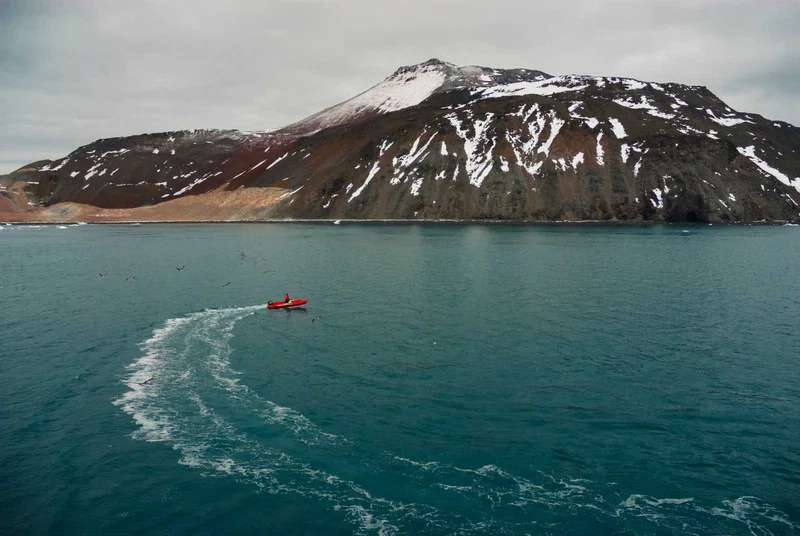
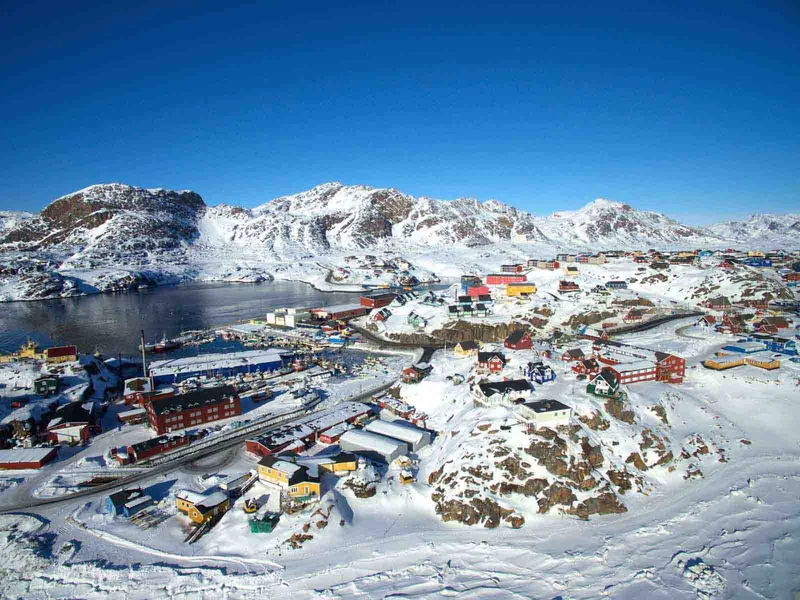
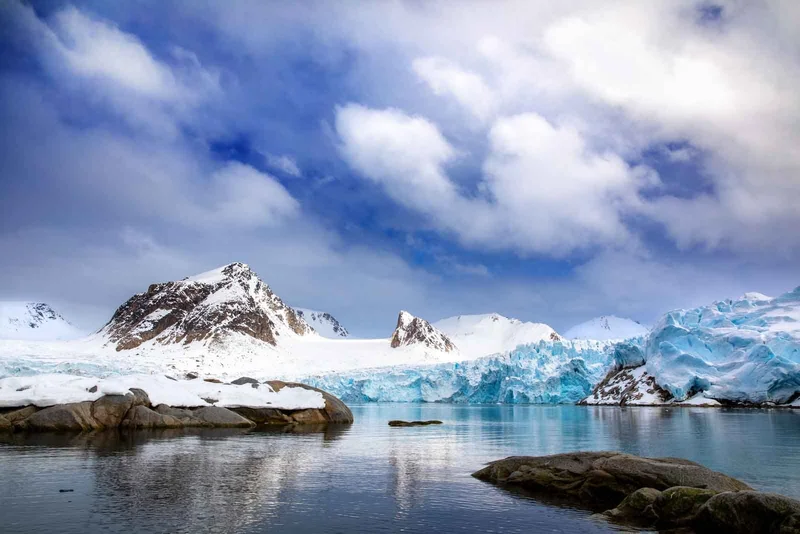
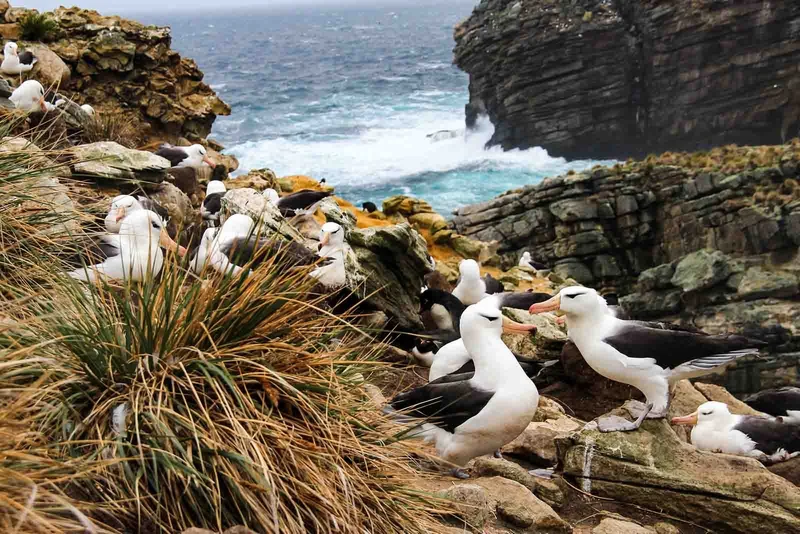

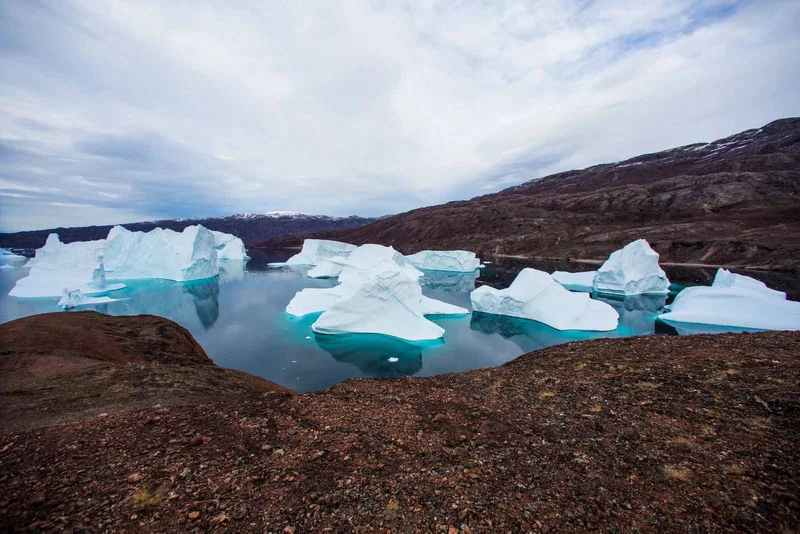
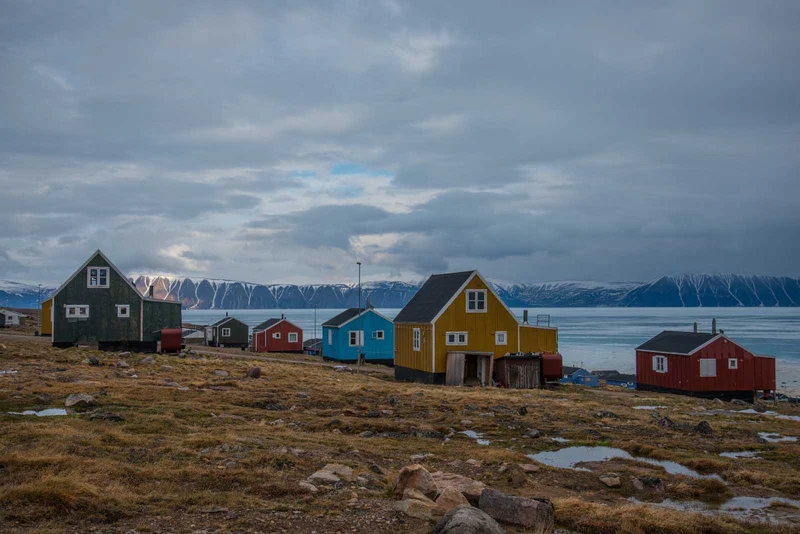
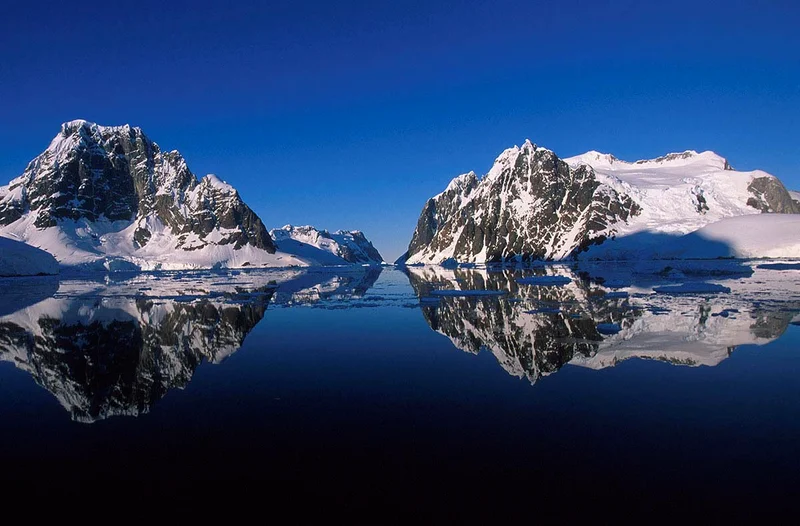
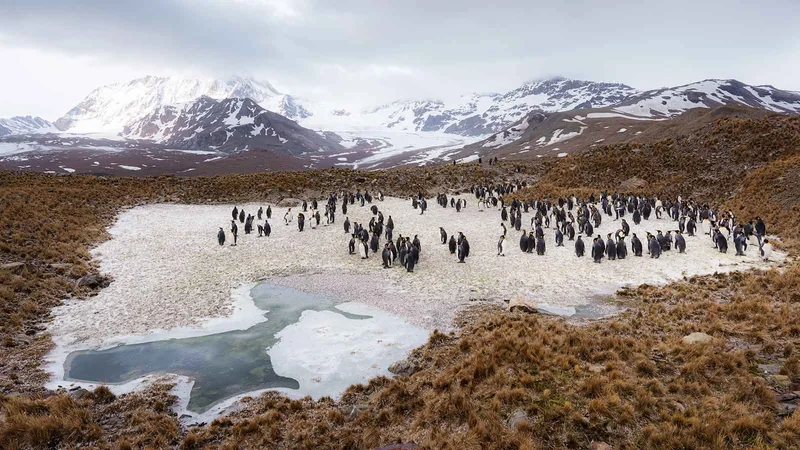
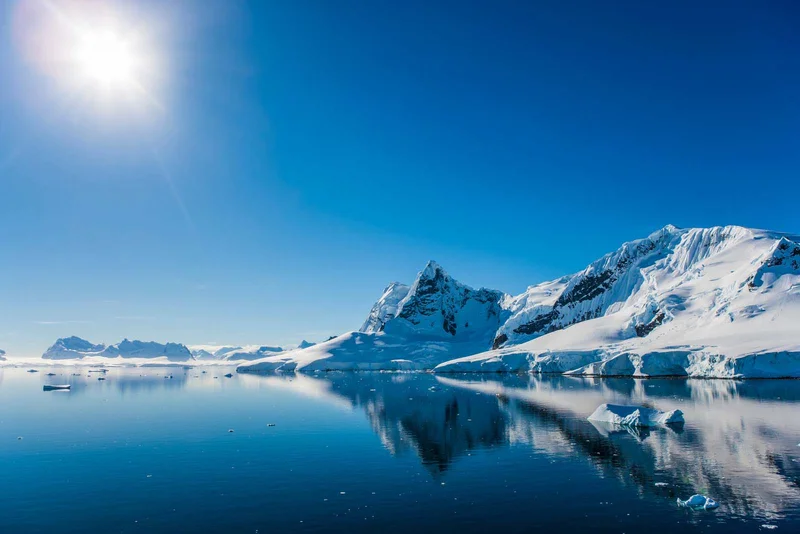
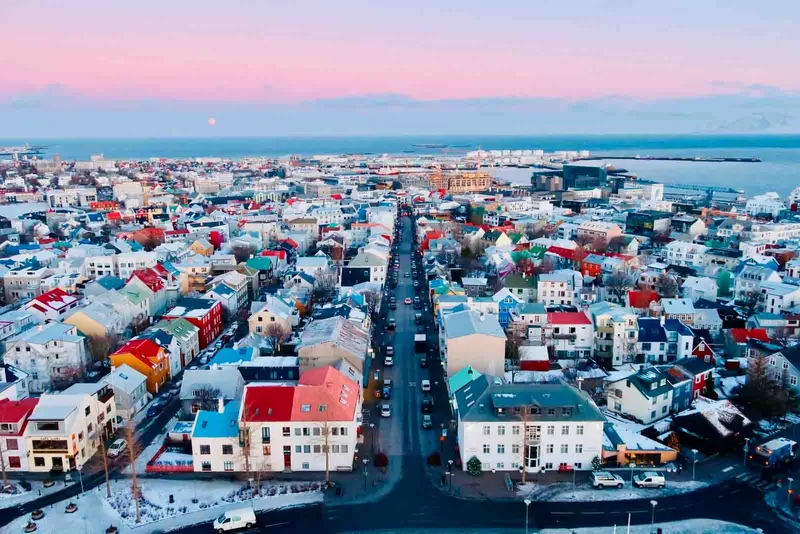
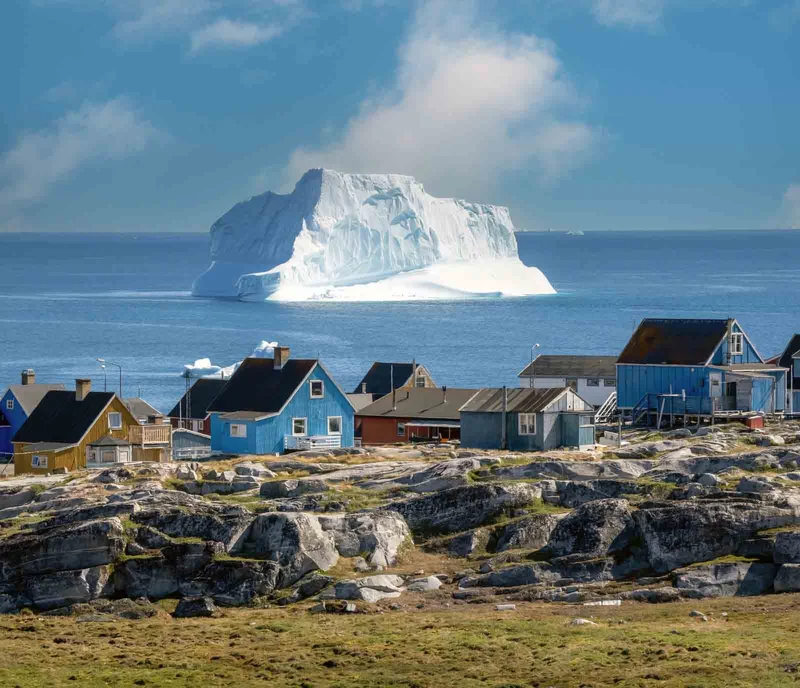
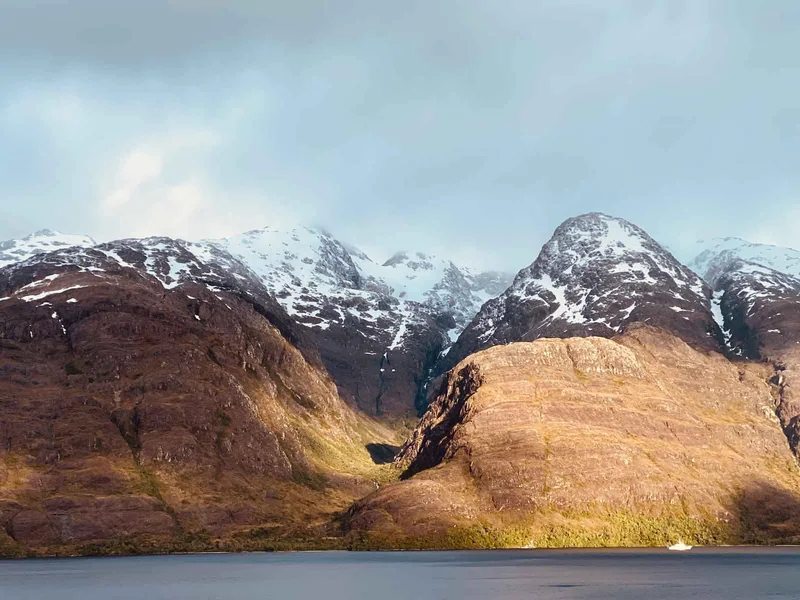
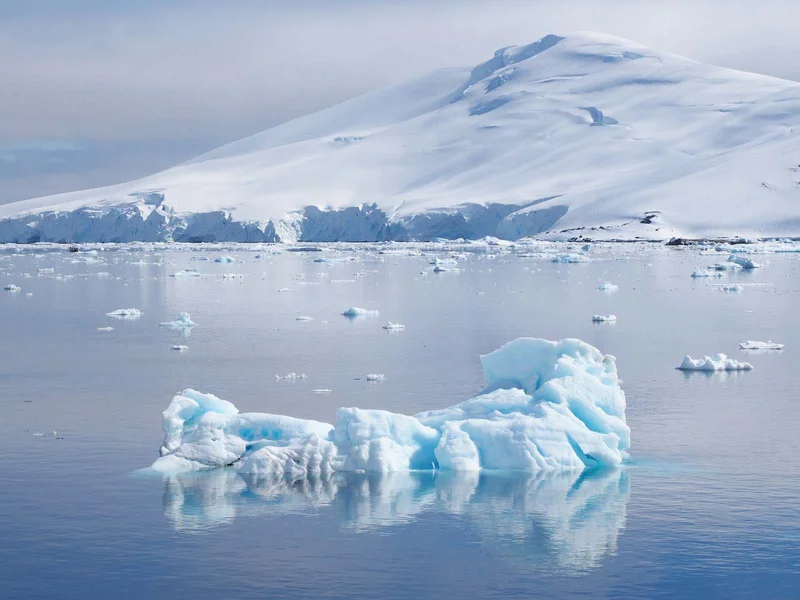
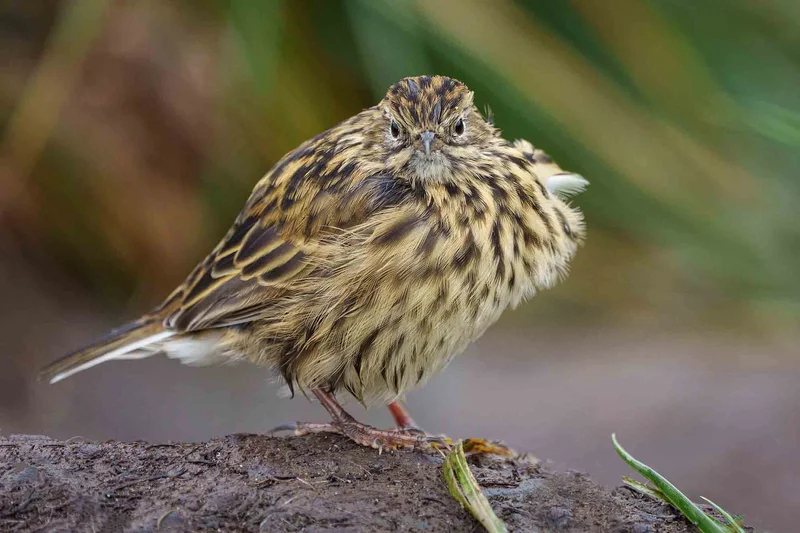
12 Day Artic Itinerary Includes
- Embarkation shuttle transfer to the vessel from Ushuaia city centre
- Shuttle transfer after disembarkation from the ship to Ushuaia city centre or airport
- All Zodiac landings and excursions, as per itinerary, guided by our Expedition Team
- Expedition parka
- Rubber boots loan scheme
- Briefings and lectures by our Expedition Leader and Team
- English-speaking Expedition Team
- Full board on the ship - breakfast, lunch, dinner and snacks
- Complimentary house wine, beer and soda at dinner (selected labels and brands, served at our a-la-carte dinners)
- Free tea and coffee available 24 hours
- Taxes and landing fees
- Special photo workshops
- Welcome and Farewell Cocktail Parties
12 Day Artic Itinerary Does not Include
- Extra excursions and activities not mentioned in the itinerary
- Single room supplement and stateroom upgrades
- Meals not on board the ship
- Beverages (other than coffee and tea)
- Tips for the crew (we recommend USD 14 per person per day)
- Personal expenses (e.g. Albatros Polar Spa services, Albatros Ocean Boutique purchases)
12 Day Artic Itinerary Highlights
- Visit Skjoldungen island, a remote island with a rich Norse history.
- Sail through Prince Christians Sound, a dramatic fjord with towering cliffs.
- See the Eqi Glacier, a calving glacier that produces spectacular icefalls.
Itinerary Map

12 Day Arctic cruise activities
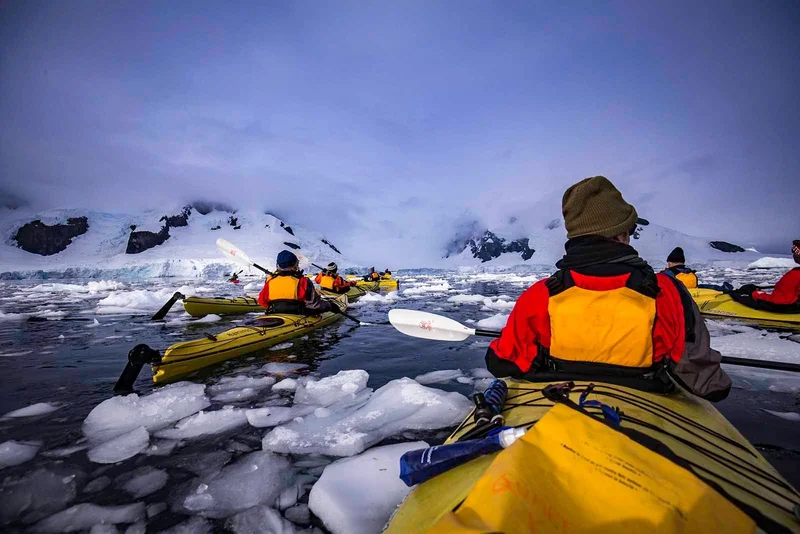
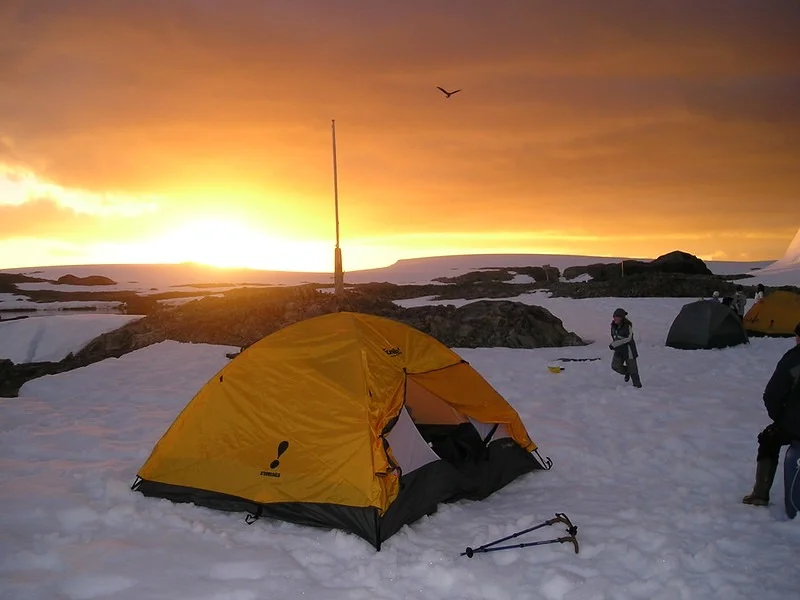
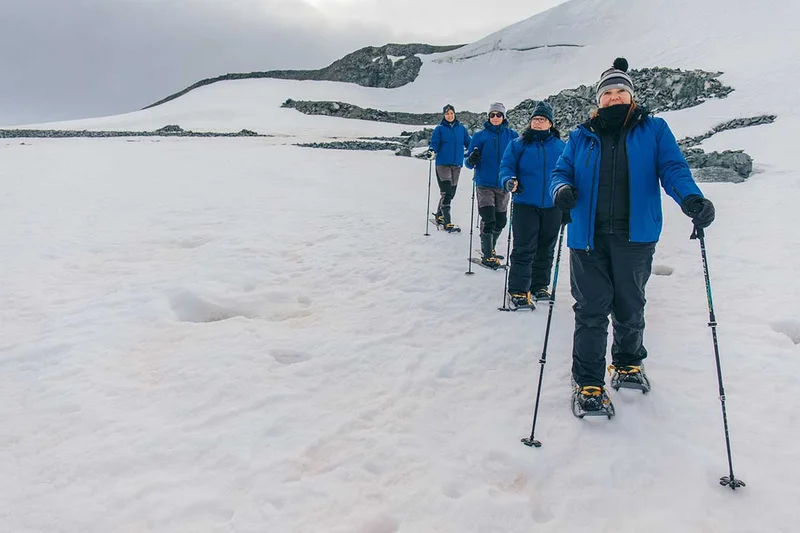
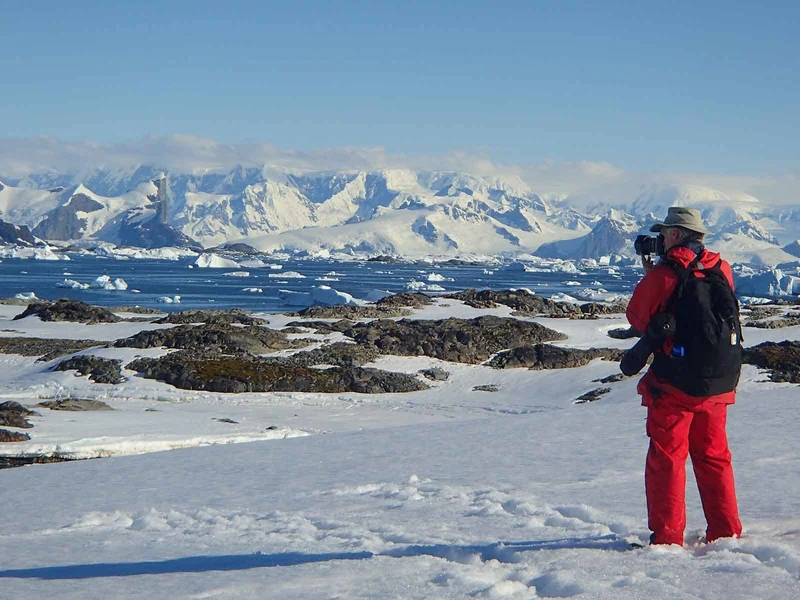
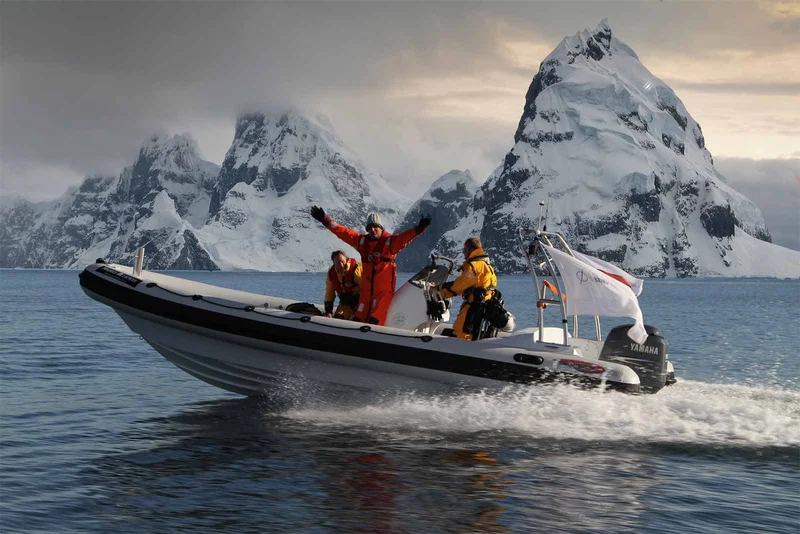

Animals you might see on this itinerary
Why travel with us?
Would you like to know why booking with us is the best choice?
Discover the BenefitsSimilar Itineraries
